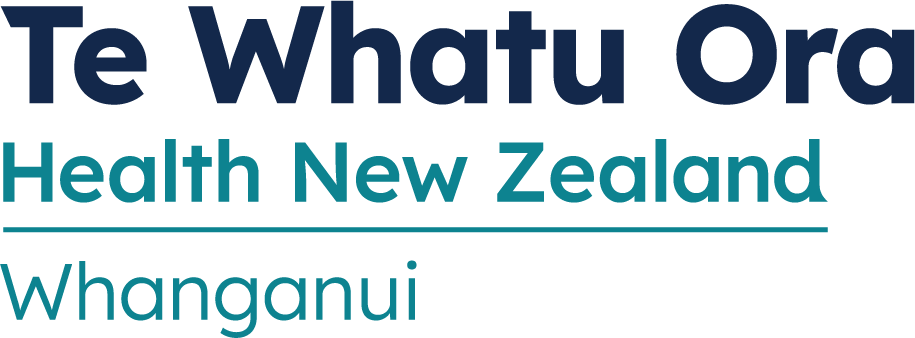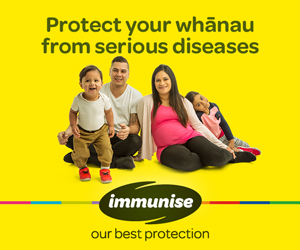
The Public Health Centre works alongside Health Protection Officers to provide advice, education and health promotion to schools and the wider community, on a wide variety of communicable diseases.
Good immunisation coverage protects a population against vaccine-preventable disease, disability, hospitalisations and national epidemics. This makes immunisation one of the most cost-effective public health interventions known. - World Health Organisation et.al 2009 Immunisation is an important component of Well Child and adult preventative health services. Over the last century, New Zealand has experienced a dramatic decline in vaccine-preventable diseases - largely due to the effectiveness and quality of the National Immunisation Programme.
Immunisation is an important component of Well Child and adult preventative health services. Over the last century, New Zealand has experienced a dramatic decline in vaccine-preventable diseases - largely due to the effectiveness and quality of the National Immunisation Programme.
Most vaccinations are administered at a GP practice. If they are part of the national childhood immunisation programme, they are free.
Immunisation against influenza is free for those with a high risk of complications, people aged 65 and over, and anyone under 65 years of age with long-term health conditions such as heart disease, stroke, diabetes, respiratory disease, (including asthma), kidney disease and most cancers. Pregnant women have also been included because studies have shown they are particularly susceptible to more severe outcomes from swine flu.
National Immunisation Register (NIR)
What is the NIR?
The National Immunisation Register (NIR) is a computerised information system developed to hold immunisation details of New Zealand children. This assists in improving immunisation rates, individual protection against vaccine-preventable diseases and protection for the community against recurring epidemics.
Immunisation is the most effective way to actively protect your child from vaccine preventable diseases, such as whooping cough, tetanus and measles.
The body uses specialised immune system cells and generates small molecules called 'antibodies' to fight infections, but very young children’s immune systems don’t have the experience to mount effective responses against germs. The first time we come across a germ, it takes a while for the immune response to get going, and in the mean time we get sick. The next time we come across the same germ, the body will be able to remember the infection and mount a much faster response.
Immunisation works in a similar way. Vaccines are made of components of the germ that can’t cause disease or form weakened versions of viruses. Through the delivery of a vaccine, the immune system is taught to respond to the harmless version of the germ so that it can respond quickly when faced with a real infection and stop us from getting sick. The vaccine doesn’t cause the disease, but teaches the immune system to recognise the invaders in the future.
Some of the diseases immunised against are very serious in young children. Some, like measles, are highly contagious and usually fairly mild, but pose a risk of serious complications. The safest and most effective way to ensure the good health of your child is to protect them from getting the diseases at all.
The immunisation schedule is structured to provide the best protection for our children when they are most at risk. Starting at six weeks, children can be protected from the potentially dangerous diseases that they may encounter. It is very important to stick to the schedule – not immunising your child increases the risk of them getting the infection. Not keeping up to date with immunisations reduces the protection that the immunisation can provide.
Related links and resources
- Immunisation Advisory (IMAC) website
- Ministry of Health website – Immunisation
- National Immunisation Schedule – MoH Website
- Whooping Cough Video – KidsHeath website
Why is it important to immunise my child?
Immunisation helps our children avoid many diseases that can seriously harm them. When a child is immunised, the vaccines teach their immune system to respond to parts of germs that aren’t dangerous, or to weakened or inactive viruses that can’t cause disease. After immunisation, the immune system can generate specialised cells to fight the infection if they are exposed to the disease, preventing them from getting sick.
Some parents focus more on the (rare) side effects of immunisation than on the diseases that immunisation protects against. The risk of serious side effects from immunisation is very low, compared to the risk of complications or death, should a child contract one of the vaccine-preventable diseases.
Immunisation is an important way to actively protect your child from these dangerous diseases.
How well does immunisation work?
Immunisation works very well to prevent a wide range of serious diseases. Sometimes, immunisation isn’t completely successful and it doesn’t protect children completely. In cases like this, children can get the disease, but don’t get as sick as they would if they weren’t immunised. While vaccines can’t provide 100 percent protection to all people, the more people that are immunised, the less the diseases will spread through the population. The people who are protected against the disease can protect the people who aren’t by reducing their risk of exposure to the germs.
Why does New Zealand start immunisation at six weeks of age?
New Zealand brought forward the first dose of the Childhood Immunisation Schedule from three months of age to six weeks of age in 1984. This followed an outbreak of whooping cough (pertussis), which affected those under three months old most severely. With immunisation delivered earlier infants could start developing pertussis protection sooner.
Many countries start their immunisation schedule at four weeks of age but New Zealand starts at six weeks of age to coincide with the six week post-natal check for both mothers and babies.
Why immunise on time?
Young infants are particularly at risk of serious complications from some diseases such as whooping cough, pneumococcal disease and Haemophilus influenzae type b (Hib disease). Starting immunisation at six weeks old begins to provide protection during the most vulnerable periods of childhood. Delaying or missing immunisations increases the risk of getting a disease and reduces the protection when it’s needed most.
School-based services
Te Whatu Ora Whanganui runs two school-based immunisation programmes - Boostrix (tetanus, diphtheria and pertussis) for Year 7 students, and HPV (human papillomavirus) - or cervical cancer vaccinations for Year 8 girls.
HPV Immunisation Programme
Girls and young women born from 1 January 1990 are eligible to participate in New Zealand’s HPV (human papillomavirus) Immunisation Programme.
HPV immunisation is free for girls and young women born on or after 1 January 1990. It is available through participating schools or from family doctors, local health centres and some family planning clinics.
- Young women born from 1992 onwards have until their 20th birthday to start the HPV immunisation programme
District health boards can provide more information about the HPV immunisation programme in their district.
The HPV Immunisation Programme aims to protect young women from HPV infection and the risk of developing cervical cancer later in life. Around 150 women are diagnosed with cervical cancer and 60 women die from it each year in New Zealand.
Questions and Answers
Related Websites
Current NSU Programmes - The National Cervical Screening Programme aims to reduce the number of women in New Zealand who develop cervical cancer and the number who die from it.
IMAC - The Immunisation Advisory Centre (IMAC) provides New Zealanders with independent, factual information including benefits and risks regarding immunisation, and vaccine preventable disease.
New Zealand HPV Project - This site provides up-to-date information about HPV and is run by the New Zealand HPV Information Project.
Centres for Disease Control and Prevention (CDC) - The Centres for Disease Control and Prevention (CDC) is an agency of the United States Department of Health and Human Services. It works to protect public health and safety by providing information to enhance health decisions.
For more information please contact:
Te Whatu Ora Whanganui Immunisation Coordinator
Public Health Centre | Whanganui District Health Board
Phone 06 348 1775



